3D home modeling software facilitates outdoor living space design. Users visualize potential designs before implementation, ensuring alignment with their preferences and spatial constraints. Software like SketchUp and AutoCAD offers libraries with varied outdoor furniture, plants, and materials, enabling diverse design experimentation. Data indicate that visualization tools significantly increase customer satisfaction by allowing adjustments before physical work begins, reducing costly errors.
Software accuracy improves measurement precision, crucial for outdoor spaces where dimensions affect functionality and aesthetics. Users input exact dimensions, and the software generates proportionally accurate models, eliminating guesswork. Features enable sunlight simulation at different times, aiding in the strategic placement of elements like trees and pergolas for optimal light and shade. Studies show that accurate sunlight simulation can enhance energy efficiency by up to 25% by informing decisions on natural lighting and heating.
Arcadium stands distinct in user-friendliness and accessibility. Unlike professional-grade options requiring extensive training, Arcadium allows to quickly create 3D house plans, including detailed outdoor living spaces, without prior 3D modeling experience. This democratizes design, allowing people regardless of technical skills to optimize their living environments creatively and practically.
Contents:
Exploring 3D Home Modeling Software: A Game Changer for Outdoor Living Spaces
Why do professionals and enthusiasts alike turn to 3D home modeling software for designing outdoor living spaces? The answer is straightforward: precision and creativity. Users manipulate virtual models, ensuring every table, chair, and plant occupies the optimal spot. This software negates guesswork, turning abstract ideas into tangible plans.
How does 3D home modeling software streamline the planning process? By allowing real-time adjustments and iterations. Architects draft pergolas and swimming pools, then tweak their dimensions or positions with simple clicks. Such flexibility fosters experimentation, leading to designs that might have been unimaginable with traditional methods.
What sets 3D home modeling software apart in visualizing outdoor enhancements? The key is immersive experience. Clients don 3D glasses and walk through their future patios or gardens, feeling the space around them. This technology bridges the gap between imagination and reality, making clients active participants in the design process.
As landscape design tools, 3D home modeling software shines for outdoor living spaces. Traditional tools rely on flat, 2D drawings that can obscure the relationship between different elements. 3D models, however, offer a bird's-eye view and a pedestrian's perspective, revealing how sunlight filters through trees or how a fire pit integrates with seating arrangements. This depth of exploration empowers designers to craft spaces that are not only beautiful but also functional and harmonious with the natural environment.
Benefits of Utilizing 3D Modeling for Outdoor Enhancements
Why consider 3D modeling for enhancing outdoor living spaces? It offers precision in design. Architects utilize this technology to draft detailed plans for gardens, patios, and swimming pools. Each model showcases potential finishes, textures, and layouts, ensuring that every corner of the space is optimized for aesthetics and functionality.
How does this technology impact decision-making? It fosters informed choices. Homeowners can explore various landscaping options, furniture arrangements, and lighting setups through realistic simulations. This immersive experience helps in selecting the most suitable designs, materials, and plants, minimizing the risks of costly changes post-construction.
What are the advantages of visualizing outdoor enhancements in 3D? It streamlines communication. By presenting ideas through vivid models, misunderstandings between clients and designers decrease. The visual clarity these models provide bridges the gap between conceptual ideas and physical realities, making it easier to align expectations and deliver desired outcomes.
In evaluating the efficacy of 3D modeling against traditional methods, the former significantly enhances client satisfaction. The tangible previews of future outdoor living spaces surpass the abstract sketches and blueprints in terms of comprehensibility and engagement. Clients become active participants in the design process, their feedback integrated seamlessly, leading to outcomes that more closely match their vision. This collaborative approach, facilitated by 3D modeling, enriches the design experience, yielding spaces that are not only beautiful but also deeply personalized.
Choosing the Right 3D Software for Your Outdoor Project
What factors should guide the selection of 3D home modeling software for outdoor spaces? Key considerations include ease of use and feature set. Novices might prioritize intuitive interfaces, while professionals could seek advanced capabilities like terrain modeling and light simulation. Both user groups benefit from software offering a comprehensive library of outdoor furniture, plants, and materials.
How significant is compatibility and integration with other tools? It's crucial for streamlining workflows. Software that supports import and export formats common in architecture and design fields, such as DWG or DXF for CAD drawings, enhances collaboration among architects, landscape designers, and contractors. Tools that provide seamless integration with virtual reality systems offer immersive presentations to clients, allowing them to visualize their outdoor living spaces in novel and engaging ways.
Does customer support and community matter in choosing software? Absolutely. Beginners and seasoned professionals alike encounter challenges and questions. Platforms backed by responsive customer service and an active user community provide invaluable resources for troubleshooting, learning, and sharing tips. Forums, tutorials, and webinars are examples of support that can significantly ease the learning curve and improve project outcomes.
Software A might offer a vast library of outdoor elements and an intuitive interface, making it ideal for users focused on visualization and design without deep technical expertise. In contrast, Software B, with robust terrain editing tools and high-quality rendering capabilities, suits users with a background in landscape architecture or those needing to present projects to clients in detailed photorealistic visuals. Therefore, the right choice hinges on specific project requirements and user expertise, emphasizing the importance of matching software capabilities with project needs and user skills.
Designing Your Dream Outdoor Living Space: Tips & Tricks
How can one maximize the use of 3D home modeling software for outdoor spaces? Efficient planning ensures a seamless transition between indoor and outdoor areas. 3D home modeling software enables precise placement of items such as furniture, plants, and pools, enhancing the overall flow. Users can adjust dimensions, experiment with different styles, and visualize the end result, eliminating guesswork.
What elements should be prioritized for a balanced design? Harmony between functionality and aesthetics is key. For functionality, consider walkways, seating, and shade structures; for aesthetics, integrate decorative plants, lighting, and water features. This balance creates a space that is both beautiful and practical, inviting relaxation and entertainment.
Are there any tricks to make the process smoother? Start with a clear vision and set achievable goals. Utilizing layers and textures adds depth and interest to the design, while a consistent color scheme unifies the space. Regular reviews and adjustments to the plan as needed ensure the design remains aligned with the vision.
Outdoor spaces designed with 3D modeling software often boast more cohesive and well-thought-out designs than those created without. These spaces typically offer a higher level of detail, allowing for a more accurate representation of the final look before any physical work begins. Moreover, they afford homeowners the flexibility to explore various configurations and styles, ensuring the final outdoor living space truly reflects personal taste and functionality needs.
Integrating New Features into Existing Landscapes with 3D Models
How can new features be seamlessly added into existing landscapes using 3D models? By accurately mapping out the current environment, users can visualize potential additions with precision. Trees, pools, and patios become easily adjustable elements within the digital space. This allows for the exploration of various design options without the need for physical alterations, ensuring the best fit is found before any real changes are made.
What advantages do 3D models offer in enhancing outdoor living areas? They provide a clear understanding of spatial relationships, making it simpler to see how new installations like fire pits or flower beds will interact with existing structures. Sunlight patterns can be simulated to determine the optimal placement for seating areas or gardens, enhancing user enjoyment and plant health. These models assist in identifying potential issues, such as drainage problems or clashes with underground utilities, before they become costly mistakes.
Are there ways to incorporate sustainability into these designs? Absolutely, 3D modeling tools enable the inclusion of sustainable features such as rainwater harvesting systems or solar panels in the outdoor layout. By evaluating different configurations, homeowners can maximize environmental benefits and minimize their carbon footprint. Native plants and permeable paving materials can be selected to reduce water usage and improve soil health, showcasing a commitment to eco-friendly practices.
Incorporating new features into existing landscapes with 3D models not only ensures a higher degree of precision but also fosters a more sustainable approach than traditional methods. Virtual modifications require no physical materials until the final design is selected, reducing waste. These technological solutions accelerate the design process, allowing for quicker implementation and enjoyment of the new outdoor living space, with a lower environmental impact and greater alignment with existing natural elements.
Cost Analysis: Budgeting Your Outdoor Space Makeover
How does one determine the financial requirements for transforming their backyard into a vibrant living area? Initially, utilizing 3D home modeling software allows for a precise estimation of expenses. Clients can adjust materials, such as stone instead of brick for patios, or opt for native plants over exotic flowers to align with budget constraints. This software aids in identifying necessary resources, thus preventing unnecessary expenditures on unneeded items.
What financial advantages does employing 3D modeling software offer when planning outdoor spaces? Significantly, it reduces the risk of costly mistakes. For instance, redesigns due to unforeseen issues are less frequent, saving money on labor and materials. The software provides a visual budgeting tool that tracks spending in real time, ensuring the project stays within financial limits.
Is there a cost-effective strategy for selecting features and materials using 3D modeling software? Indeed, the software facilitates experimenting with various scenarios to find the most economically viable options. Choosing synthetic turf over real grass or solar lights instead of wired fixtures exemplifies how initial higher costs can lead to long-term savings. This approach allows for a balance between aesthetic appeal and fiscal responsibility.
In terms of long-term investment, well-planned outdoor spaces increase property value more significantly than hastily assembled ones. The accuracy of 3D home modeling in predicting outcomes ensures higher satisfaction with the finished project. Moreover, this meticulous planning often results in lower maintenance costs, providing a dual advantage of enhancing the home’s appeal while conserving funds over time.
Visualizing Future Renovations: A Preview of Your New Outdoor Living Area
How does one transform a bland backyard into a vibrant gathering spot? By utilizing 3D home modeling software, the vision becomes clear. The software grants homeowners the ability to experiment with various layouts, furniture arrangements, and landscaping elements such as trees, flowers, and hedges. This technology serves as a bridge between imagination and reality, enabling the user to explore endless possibilities.
What benefits do these visualizations offer before the actual makeover begins? They eliminate guesswork. Users can see how different materials, like stone versus wood, impact the overall aesthetic. Color schemes for cushions, umbrellas, and awnings can be swapped effortlessly, ensuring the final design is cohesive and appealing. Lighting options, from string lights to lanterns, are tested to enhance ambiance without physically altering the space.
Can modifications be made easily during the planning phase? Absolutely. One of the key advantages of 3D home modeling software is its flexibility. If a particular layout of patio furniture appears too congested, adjustments are straightforward. Similarly, if a swimming pool dominates too much space, resizing or repositioning it takes mere clicks. This adaptability prevents costly mistakes and promotes a more efficient, satisfying design process.
Outdoor living spaces envisioned through 3D modeling software boast greater accuracy in design implementation than traditional planning methods. Without the need to rely on flat, two-dimensional sketches, homeowners appreciate a more immersive, comprehensive preview of their future outdoor oasis. This precision ensures that the envisioned and completed projects align more closely, reducing discrepancies and increasing overall satisfaction with the final transformation.
Maintenance and Upkeep: Managing Your Space Post-Transformation
How does one ensure the longevity of their newly transformed outdoor living area? Regular maintenance tasks become essential. Gardens require watering, lawns need mowing, and furniture demands cleaning. These activities prevent deterioration, ensuring the space remains inviting and functional.
What strategies minimize the effort involved in upkeep? Choosing durable materials and designs simplifies maintenance. For instance, synthetic decking resists rotting and fading, whereas natural stone patios endure harsh weather conditions without cracking. Implementing an automatic irrigation system conserves water while guaranteeing plants receive adequate hydration.
Are there benefits to incorporating smart technology into outdoor living spaces for maintenance purposes? Absolutely. Smart devices can monitor weather conditions, adjusting watering schedules for lawns and gardens accordingly. Similarly, robotic lawn mowers trim grass autonomously, while outdoor lighting with sensors enhances security by illuminating the area only when needed. These technologies reduce manual labor and energy consumption, streamlining the maintenance process.
Outdoor living spaces designed with low-maintenance materials and smart technologies fare better over time than those without. They demand less physical labor for upkeep, saving homeowners both time and energy. Their resilience against weather conditions and wear translates into cost savings, as fewer repairs or replacements are necessary. This strategic approach not only enhances enjoyment but also protects the investment made in transforming outdoor areas.


 All training, tips and articles
All training, tips and articles
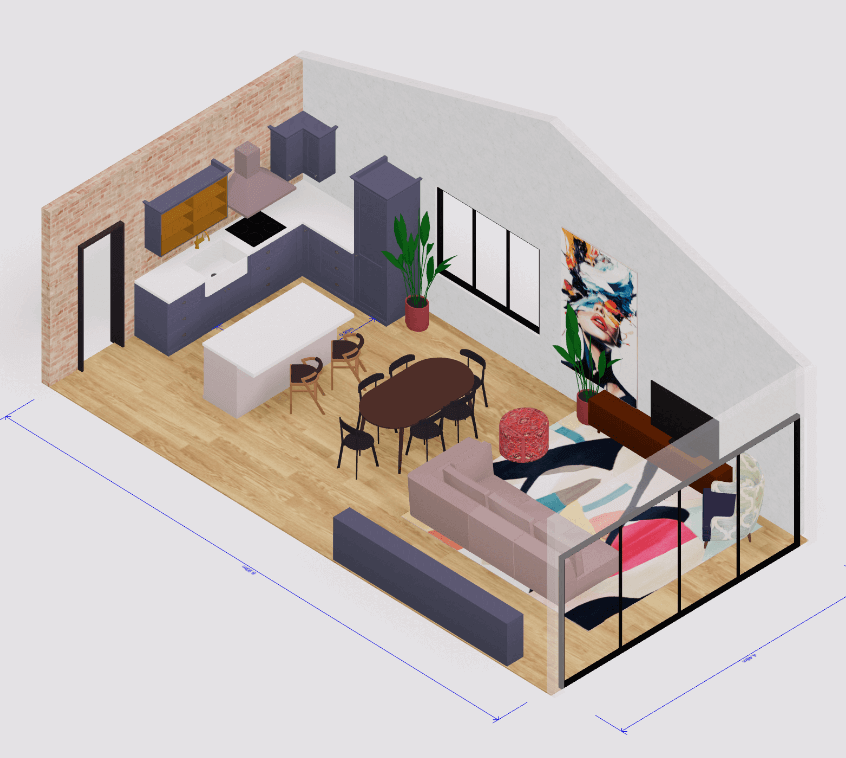 3D house design tool
3D house design tool
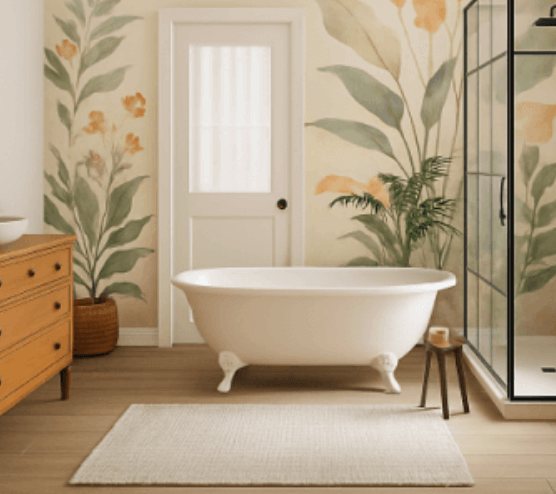
 Color palette generator
Color palette generator
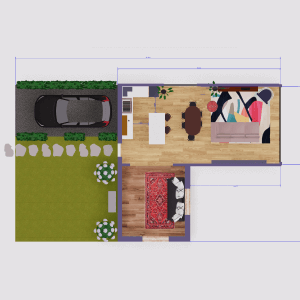 Floor plan creator
Floor plan creator
 Interior design app
Interior design app
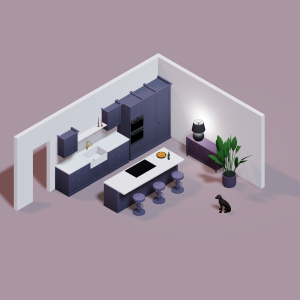 Kitchen design tool
Kitchen design tool
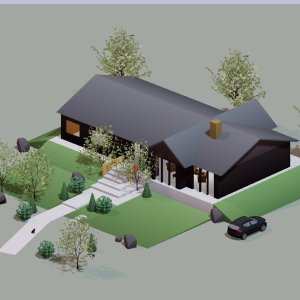 House design software
House design software
 Room designer
Room designer
 Landscape design software
Landscape design software
 Bedroom design
Bedroom design
 Office floor plan creator
Office floor plan creator
.png)



